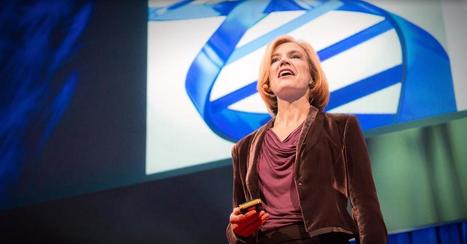Geneticist Jennifer Doudna co-invented a groundbreaking new technology for editing genes, called CRISPR-Cas9. The tool allows scientists to make precise edits to DNA strands, which could lead to treatments for genetic diseases ... but could also be used to create so-called "designer babies." Doudna reviews how CRISPR-Cas9 works -- and asks the scientific community to pause and discuss the ethics of this new tool.
Should scientists edit the human genome, striking out undesirable traits like so many typos? “My own views are still forming,” says Jennifer Doudna, who with her research partner, Emmanuelle Charpentier, developed a powerful gene editing technique at her University of California, Berkeley lab several years ago (TED Talk: We can now edit our DNA. But let’s do it wisely). “I’m still trying to get a handle on how and when and why would we want to use this.”
“This” is a genetic editing process that uses an enzyme with the ungainly name of CRISPR-Cas9 to precisely slice into a strand of DNA, snipping out genetic material with the precision of a scalpel. Aside from offering an unexpectedly high level of precision at removing specific As, Ts, Gs and Cs, the CRISPR-Cas9 technique opens a new Pandora’s box: when used on embryos, the genetic changes can be inherited from parent to child.
Since its invention, the CRISPR-Cas9 technique been used to put lab rats, monkeys, even non-viable human embryos under the genetic knife. But an ethical question hangs over whether the technique should be applied to living human embryos, where an edited gene can be inherited from one generation to the next. One fix could strike out a genetic illness from a family’s bloodline; one mistake could irrevocably alter the human genome in ways we can’t know.
That’s why Doudna, along with a panel of influential genetic scientists, has called for a worldwide pause on any experiment with the human genome. It’s also why she’s helping to convene a three-day summit this December at the National Academy of Sciences in Washington, D.C., where she and others will debate how far the world should take this technology. Doudna hopes the attendees will agree to some framework, any framework, for guiding responsible experimentation.
Gene editing is a polarizing issue, and her informal survey of the research community has turned up wildly divergent opinions. Some researchers favor a complete ban on edits to human embryos, preferring alternative treatments for genetic illnesses (in vitro screening, for instance, that identifies embryos with harmful mutations). Others believe that constraints on research could delay or prevent still-undiscovered cures. Doudna does not expect to solve these differences in three days, but she hopes that the opinions of scientific heavyweights can help shape the conversation. “Highly respected scientists do have a role to play in making a statement that invites people at least to consider their viewpoint,” she says. Bioethicists, lawyers, patient advocacy groups and government regulators will also be there to have their say. If that sounds like an unwieldy conversation, well, it will be. Fortunately, for Doudna, there’s a playbook for this sort of powwow.



 Your new post is loading...
Your new post is loading...








